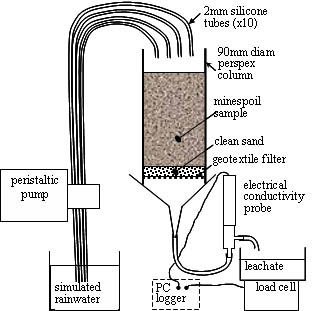Centre for Geotechnical Science and Engineering

The Environmental Geotechnics of Coal Mine Spoil
Key Researchers: Stephen Fityus, Greg Hancock, Tony WellsAims and backgroundMuch of Australia's export wealth comes from the export of mined coal. An unavoidable consequence of open-cut mining of coal is that it disturbs large volumes of ground, altering its structure and hydromechanical properties to significant depths. Despite the vast areas currently (and potentially) affected by such activity, there is still surprisingly little known about the long-term fate of mined areas. It is important that mined areas be rehabilitated and revegetated, so that sediment runoff is limited, and so that the land is able to fulfil some useful and economically valuable function once mining has ceased. The salinity of rehabilitated land and water is an important factor controlling its ecological and economic value in the future. Also, in most open-cut mining operations, a final void usually results, becoming an artificial lake in the rehabilitated landscape. Little is known about the long-term water quality in these lakes. In order to study and predict the likely characteristics of rehabilitated minesites, it is necessary to have a good understanding of the potential for salt to be leached and transported from the minespoil (overburden). The aim of this work is to present salinity and hydrological data, for a range of typical spoil materials from the Hunter Valley, that can be used in the modelling and prediction of salt release from overburden piles in abandoned coal mines. Methods and ApproachLeaching was performed on representative, fresh mine spoil samples, placed in perspex columns, and then subjected to a series of spatially uniform rainfall events. Simulated rainfall solution was delivered from 10 evenly spaced tubes, delivering equal flows, using a peristaltic pump. The rates of inflow and outflow were observed, and the chemical characteristics of the leachate (EC and quantitative ion concentration analyses using Ion Chromatograph) were measured. MaterialsFour different mine spoil materials were considered in this study.
OutcomesMine spoils contain significant quantities of salts that have the potential to be leached out in the post-mining landscape. Upon initial exposure to rainfall, salts are initially released in relatively large concentrations, but these quickly reduce to values that are comparable with local waterways and shallow aquifers. The spoils studied release between 22% and 40% of their leachable salts when leached by up to 0.5 litres of rainfall per kg of spoil. Leaching by a considerably greater volume would be required to remove the remaining soluble salt. | 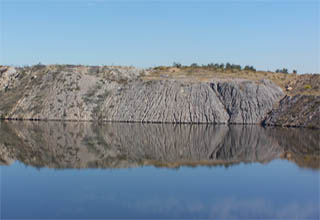 Figure 1: Typical water filled mine void with adjacent minespoil landscape (un-rehabilitated)
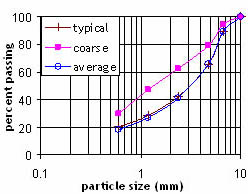 Particle size distributions of the tested spoils 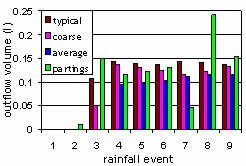 Leachate outflow for each rainfall event 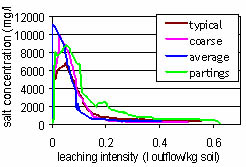 Salt concentrations as a function of the amount of water leached through the spoil |
The University of Newcastle acknowledges the traditional custodians of the lands within our footprint areas: Awabakal, Darkinjung, Biripai, Worimi, Wonnarua, and Eora Nations. We also pay respect to the wisdom of our Elders past and present.
